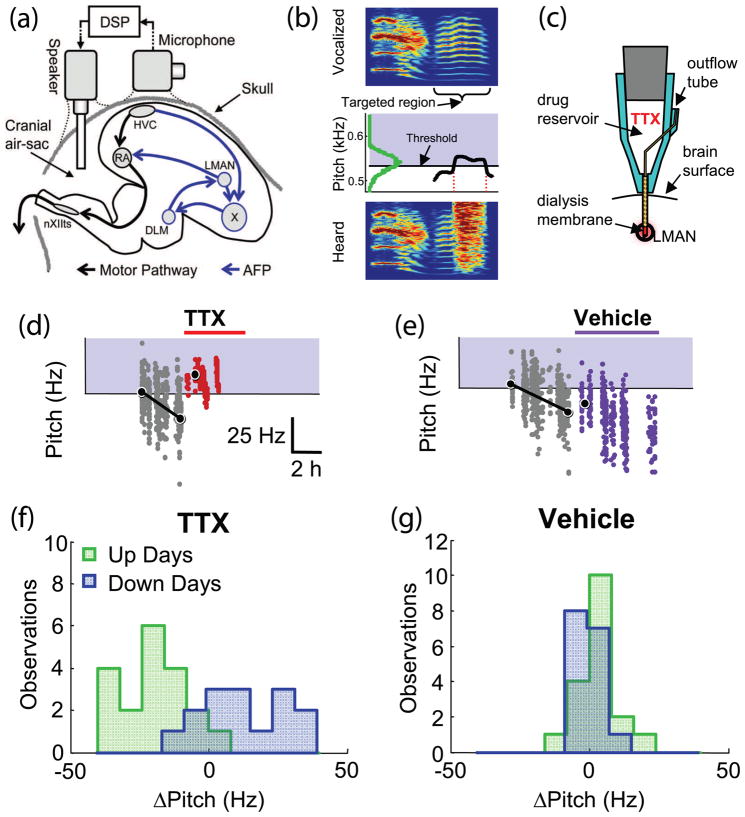Figure 3.
Disconnection of the BG homologue in the songbird blocks the expression of newly-acquired song adaptive changes. (a) The bird anterior forebrain pathway (AFP) contains homologues to most structures of the mammalian BG. Output from the AFP affects motor execution pathways via the premotor-like LMAN nucleus. Andalman et al. [11••] perturbed singing selectively using a head-mounted microphone and speaker system. (b) White noise perturbations were delivered when the fundamental frequency of one song syllable (“Targeted region”) crossed a specific pitch threshold (red vertical lines, middle panel). The white noise burst grossly altered the song heard by the animal (bottom). On different days, the noise perturbation either targeted pitches above the mean syllable frequency (“Down days”, illustrated in (b)) or pitches below the mean (“Up days”, not shown). (c) Tetrodotoxin (TTX) was infused into LMAN bilaterally using the reverse microdialysis technique. (d) Before TTX infusion, animals responded to noise perturbations by progressively changing the fundamental frequency of the targeted syllable so as to avoid the perturbation. TTX infusion resulted in an immediate loss of that adaptive change. (e) Infusion of vehicle alone had no effect on noise-avoiding adaptive changes. (f-g) TTX infusions caused rapid maladaptive changes in the targeted syllable’s fundamental frequency (i.e., an increase in pitch on “Down days” and a decrease on “Up days”). (Adapted from Figures 1 and 2 of [11••] with permission from the authors and the National Academy of Sciences.)

